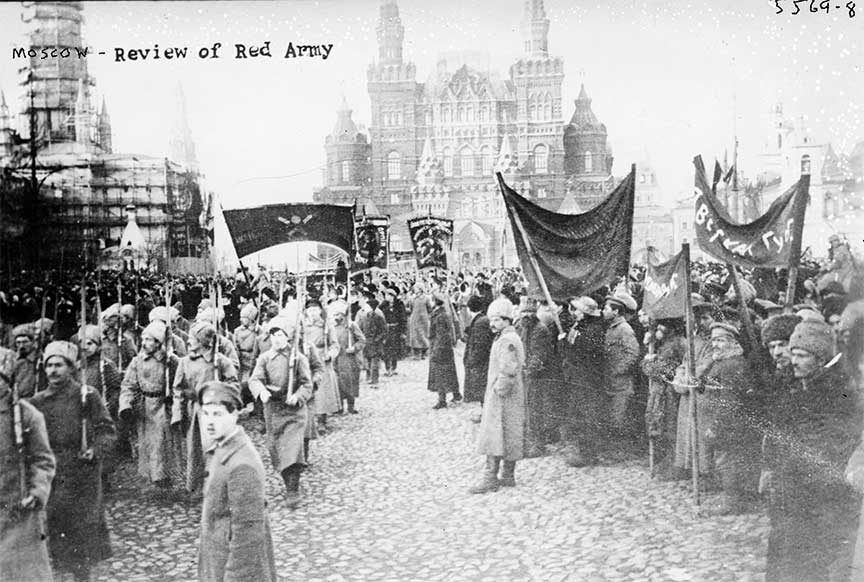
The purges in the Soviet Union spread to the Soviet military. Marshal Michael Tukhachevski and seven other top generals were arrested and executed for treason.
Italian and German interests had begun to align. Both countries were supporting the right-wing forces of General Franco in Spain. In addition, Italy wanted to be the dominant force in the Mediterranean, but thwarting that goal was the British Navy. On September 25, 1937, Mussolini visited Hitler in Munich. Together they watched army maneuvers and then visited arms factories in Essen, Germany.
1937 was a year of intensifying purges in the Soviet Union. Anyone who had ever shown any opposition real or imaginary to Stalin was declared an enemy of the state. On January 23, 1937, a show trial began of some of the former leaders of the Communist Party, including G.L.Pyatakov, who had been the Minister of Heavy Industries, and Karl Radek, a close confidant of Lenin. The trial ended on January 30. All were found guilty, and on February 1, thirteen of the accused were shot. Radek was given a sentence of ten years in prison, but later shot was well.
In early June, leading Soviet generals, including Marshal Tukhschevsky, were put on trial. The trial began at nine in the morning on June 10. The defendants were allowed no defense. At noon they were all sentenced to death. They were shot on June 12. Anyone who objected was arrested as well.
General Gamarik was told to trie his fellow officers, but he objected, saying, how can I accuse them of treason when I know they were not guilty. He was removed from command and before he could be arrested, committed suicide. His wife was sentenced to ten years of hard labor, never to heard from again. General Dybenko, who had been a member of the Community Party since 1912 and had been the Chairman f the Baltic Fleet at the time of the revolution, was arrested. He wrote to Stalin asking him to clear his good name. He was found guilty and shot.
On July 31, the Soviet Politburo instructed the commandants of the labor camps to make a list of the inmates who continued to show signs of anti-soviet behavior. Tens of thousands of names were submitted. Seventy-two thousand nine hundred fifty labor camp inmates were shot.
The heads of 9 of the ten non- Russian regions were all removed from their positions and shot. No area and no profession was free from the terror of the purges.
 >
>